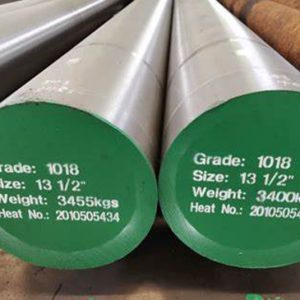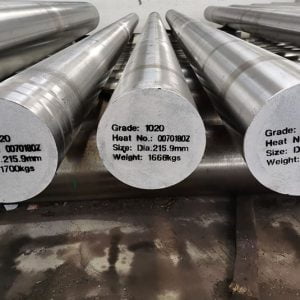In this blog, we will explore the differences between 1018 vs. 1020 steel, highlighting their unique properties, applications, and which material might be the best choice for your specific project needs.
Welcome to My Blog!
Before we dive into the content, I’d love for you to join me on my social media platforms where I share more insights, engage with the community, and post updates. Here’s how you can connect with me:
Facebook:https://www.facebook.com/profile.php?id=100087990137347
LinkedIn:https://www.linkedin.com/company/89825762/admin/dashboard/
YouTube:www.youtube.com/@carbonsteelsupply-kj9lw
TikTok:www.tiktok.com/@carbonsteelsupply
Now, let’s get started on our journey together. I hope you find the content here insightful, engaging, and valuable.
Table of Contents
Einführung

What is 1020 Steel?
1020 steel, also called AISI 1020 steel or S20C steel, is a kind of low carbon structural steel. The chemical component of 1020 mainly include: C, Si, Mn, P, S. The carbon content of 1020 steel is 0.17%-0.23%, this low carbon content gives 1020 steel good weldability and machinability, and remain suitable strength and hardness.
The mechanical properties of 1020 steel include a certain of strength and hardness, good toughness, wear resistance and good heat treatment performance. After quenching and tempering heat treatment process, can adjust its structure and performance, increase its hardness and strength, remain its toughness and plasticity.
What is 1018 Steel?
1018 steel, also called AISI 1018 steel, is a kind of low carbon steel, with balanced mechanical properties and good machinability. The carbon content is about 0.17-0.24%, manganese content is about 0.7-1%. These components gives 1018 steel good strength and toughness. Also, 1018 steel contains slightly Si, Cu, Cr, Ni, but these are not main elements.
1018 steel has excellent cutting performance and machinability due to low carbon content. It has medium hardness after annealing process, easy to turn, mill and drill. Besides, this kind of steel obtain good weldability, various welding methods are allowed to use to connection.
Chemical composition
1020 steel and 1018 steel are both low carbon steels, with many similar properties, but 1018 steel has higher Mn content, it may increase the specific property of 1018 steel.
| 1020 | 1018 | |
| C | 0.18 – 0.23% | 0.17 – 0.24% |
| Si | 0.15 – 0.35% | 0.7 – 1.0% |
| Mn | 0.30 – 0.60% | 0.17 – 0.37% |
| P | 0.040% max | 0.035% max |
| S | 0.050% max | 0.035% max |
Mechanical properties
| 1020 | 1018 | |
| Zugfestigkeit | ≥410 MPa | ≥450 MPa |
| Streckgrenze | ≥245 MPa | ≥275 MPa |
| Elongation | ≥25% | ≥24% |
| Reduction Ratio | ≥55% | ≥50% |
| Hardness | ≤156HB | ≤197HB |
Delivery condition
The delivery condition of these two types of steel can be customized to meet different application requirement. For example, normalizing can improve hardness and strength of the steel, while annealing can improve plasticity and toughness of the steel, if specific delivery condition are required, it should be indicated clearly in the order.
Common feature
- Good weldability: Due to low carbon content, these two types of steel are both easy to weld, almost no welding cracks.
- Good machinability: Low carbon steels usually have good machinability, can be turned, milled, drilled and ground.
- Cooled forming ability: They both can be cold-formed in the room temperature, such as stamping, bending and stretching.
- Heat treatment response: Although they are low carbon steels, their physical properties can be improved through heat treatment( normalizing, annealing), such as increase hardness and strength.
- Cost efficiency: It is usually low in cost due to low alloy element contents
- Wild range of applications: Both of these two types of steel are wildly used in manufacturing various mechanical components, structural parts and engineering parts, such as automobile components, construction structures, tools and molds.
- Low hardenability: Due to low carbon content, the hardenability of these two steels are relatively low, usually it wont be used in application that require deep hardening treatment.
- Predictable micro-structure: The chemical components are relatively simple, therefore the micro-structure and properties are easy to control.
- Environment adaptability: Usually these steels have certain corrosion resistance, maybe not as good as some alloy steel materials, but the corrosion resistance can be improved via surface treatment such as galvanizing or painting.
- Annealing and normalizing: These two steels usually can be soften by annealing, and increase their hardness and strength through normalizing.
These common features make 1020 steel and 1018 steel popular materials in many industry applications.
1018 vs. 1020 Steel: Application

Application Comparison
- Carbon content: 1020 steel is about 0.18-0.23%, 1018 steel is about 0.15-0.2%, lower than 1020 steel.
- Manganese content: 1020 steel is about 0.3-0.6%, 1018 steel is about 0.6-0.9% bit higher than 1020 steel, it usually results better strength and better hardness.
- Mechanical properties: Due to the different chemical components between steels, 1018 steel usually has higher tensile strength and yield strength.
- Application: 1020 steel is suitable for machining and welding due to its good weldability and machinability. While 1018 steel is suitable for manufacturing shafts, gears and other components that need to withstand higher stress.
- Cost: 1020 steel has less alloy elements, the cost may lower than 1018 steel.
- Heat treatment: Both steels’ properties can be improved after heat treatment, however specific heat treatment specification may vary.
Application scenario
1020 steel and 1018 steel are both low carbon steel, wildly used in applications that need good machinability and weldability. 1020 steel usually be used to manufacture mechanical components, automobile components, construction structures etc., due to its suitable hardness and strength. While 1018 steel is wildly used to manufacture gears, shafts, fasteners and other applications that need higher strength and toughness.
1018 vs. 1020 Steel: Choosing Between Two Great Metals
1020 steel has better weldability and machinability, is suitable for applications that require such performance, such as: chain, bolts, nuts and other general mechanical parts. While 1018 steel has higher Manganese content, it makes the steel obtain better strength and hardness, suitable for manufacturing high-stress resistance components, such as shafts, gears and fasteners. If the project needs steels with higher strength and hardness, while won’t affect machinability, 1018 steel is a better option.
Schlussfolgerung
Both steels have good weldability and machinability, but 1018 steel has higher strength and hardness. However, if the project is more focused on machinability and cost efficiency, 1020 steel could be a more suitable choice.
FAQ
What is the main difference between 1018 steel and 1020 steel?
The main difference between 1018 steel and 1020 steel is their carbon content, 1018 steel has a carbon content of about 0.18%, while 1020 steel has a carbon content of about 0.20%, which makes their hardness and tensile strength different.
Which is better for machining, 1018 or 1020 steel?
The lower carbon content of 1018 steel makes it easier to form and cut, making it more suitable for machining.
What are the typical applications for 1018 and 1020 steels?
1018 steel is typically used to make shafts, gears and automotive parts, while 1020 steel is typically used to make structural and mechanical parts.
What is the difference between the heat treatment processes for 1018 and 1020 steels?
Due to its higher carbon content, 1020 steel usually requires higher temperatures to achieve optimum hardness and is therefore more suitable for quenching than 1018 steel.





